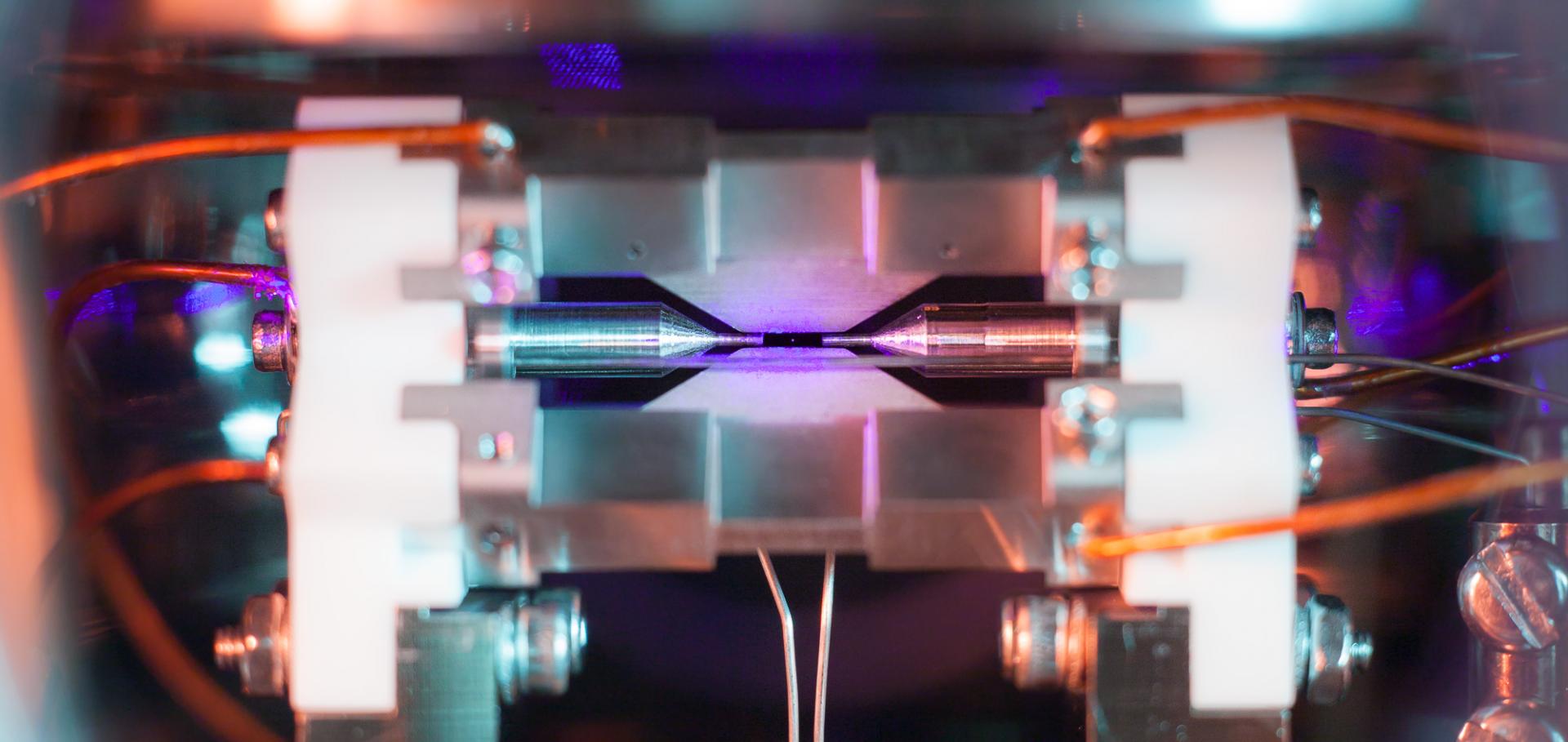Micromotion minimisation by synchronous detection of parametrically excited motion
(2021)
Precision measurement of the $^{43}$Ca$^{+}$ nuclear magnetic moment
(2021)
An optically heated atomic source for compact ion trap vacuum systems
Review of Scientific Instruments AIP Publishing 92:3 (2021) 033205
Abstract:
We present a design for an atomic oven suitable for loading ion traps, which is operated via optical heating with a continuous-wave multimode diode laser. The absence of the low-resistance electrical connections necessary for Joule heating allows the oven to be extremely well thermally isolated from the rest of the vacuum system. Extrapolating from high-flux measurements of an oven filled with calcium, we calculate that a target region number density of 100 cm−3, suitable for rapid ion loading, will be produced with 175(10) mW of heating laser power, limited by radiative losses. With simple feedforward to the laser power, the turn-on time for the oven is 15 s. Our measurements indicate that an oven volume 1000 times smaller could still hold enough source metal for decades of continuous operation.An optically-heated atomic source for compact ion trap vacuum systems
(2020)
Benchmarking a high-fidelity mixed-species entangling gate
Physical Review Letters American Physical Society 125:8 (2020) 080504


